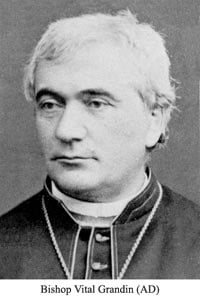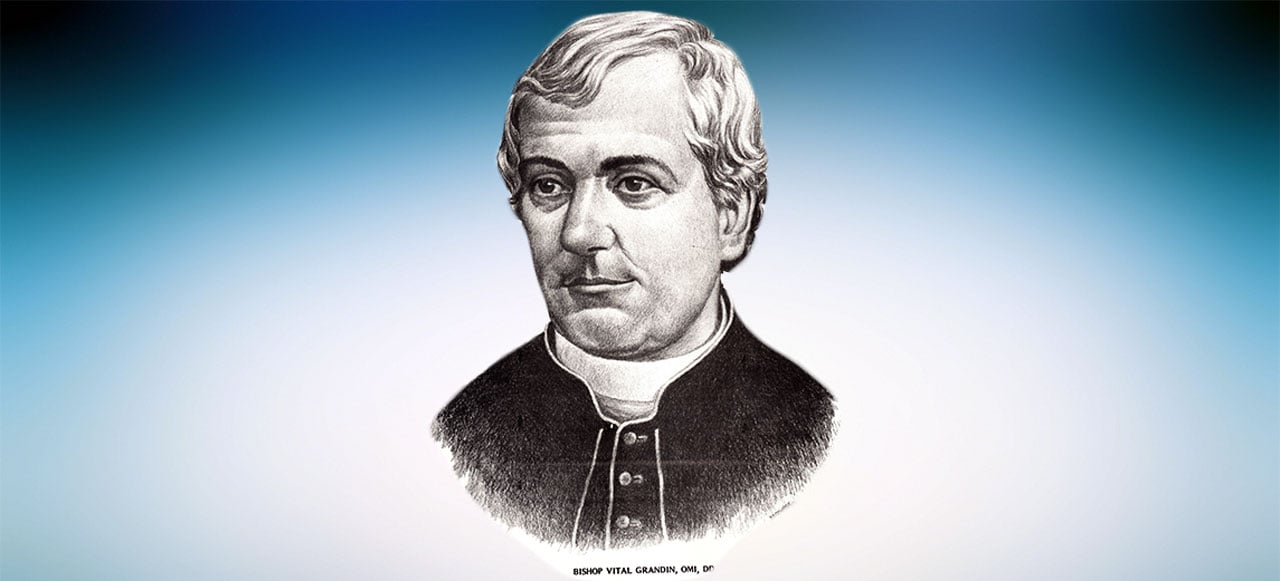Biography

Shortly after, he left for the distant missions of Western Canada. During the ensuing years, he devoted himself entirely to the conversion of the First Nation peoples and to the aid of the prairie settlers. Fr. Grandin served in the missions at Red River, from which he went to Île-à-la-Crosse, Saskatchewan, and then, in 1855, to Fort Chipewyan, where he remained until 1857. He also visited the missions of Fond-du-Lac, Saskatchewan, and Fort Resolution in 1857. Returning to Île-à-la-Crosse, he was named Bishop of Satala and Coadjutor of Archbishop Alexandre Taché, O.M.I. (1823-1894), Bishop of Saint-Boniface, Manitoba, on December 21, 1857. But, he did not receive the news until February of 1859. He was only 29 years old. He returned to France and was consecrated at Marseille on November 30, 1859, by Saint Eugene de Mazenod.
On his return to the Canadian West, he lived at Île-à-la-Crosse, (1860-1869), from which he undertook a long voyage to the missions in the Mackenzie (1860-1864), residing at Fort Providence (1861-63) and visiting the missions at Fort Liard (1861), Fort Norman (1861-1862), Fort Good Hope (1861-1862), Fort Rae (1862) and Fort Simpson (1861-1863). Through hardships and dangers, he travelled incessantly aver the vast prairie regions in an endeavor to save souls. He endured his crosses with true courage and with a genuine love for his fellow men. He was called the “shabby bishop,” because of his poverty and sufferings.
In 1869, he established himself at Saint-Albert and worked among the Cree and the Blackfoot. On September 22, 1871, he was named the first Bishop of Saint Albert (Alberta). His apostolic field at the time consisted of a few scattered, poverty stricken, missions. He frequently visited his immense diocese and his actions during the Insurrection of 1885 in defense of the Catholic schools were energetic and effective.
He died at Saint Albert on June 3, 1902. He was buried in the crypt of the parish church of Saint-Albert. Many lakes, villages and districts in the Canadian West and the Province of Quebec have been named for him.

